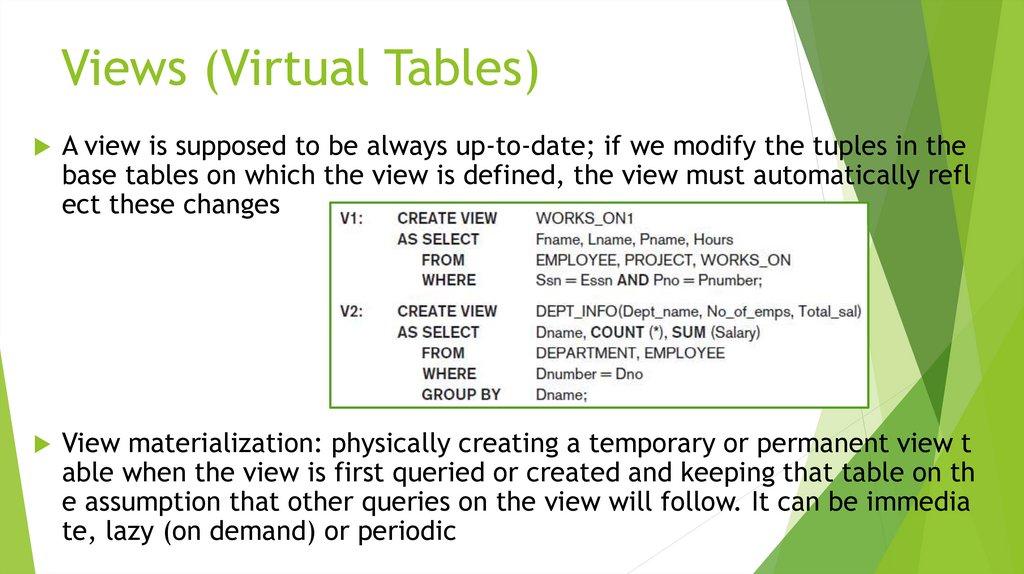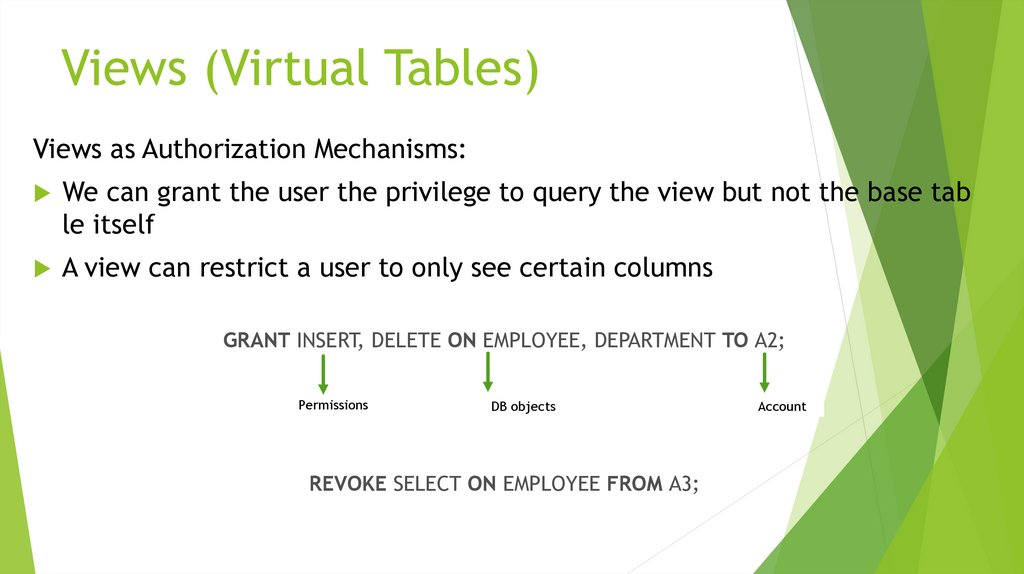Similar presentations:
Data Modeling and Databases II - The Relational Data Model and SQL
1. Data Modeling and Databases II - The Relational Data Model and SQL
Data Modeling and Databases II The Relational Data Model and SQLLuiz Araujo
Innopolis University
Week 3 - Tutorial
2. In this tutorial
More Complex SQL Retrieval QueriesSpecifying Constraints as Assertions and Actions as Triggers
Views (Virtual Tables) in SQL
Schema Change Statements in SQL
3. More Complex SQL Retrieval Queries
Comparisons Involving NULL and Three-Valued Logic:SQL uses a three-valued logic with values TRUE, FALSE, and
UNKNOWN instead of the standard two-valued (Boolean) logic with
values TRUE or FALSE
In select-project-join queries,
only those combinations of
tuples that evaluate the logical
expression in the WHERE
clause of the query to TRUE
are selected
4. More Complex SQL Retrieval Queries
Nested Queries, Tuples, and Set/Multiset Comparisons:Do it with your colleague by your side!
5. More Complex SQL Retrieval Queries
How to kill the DBMS performance? You can use correlatedsubqueries, i.e. when the inner query is filtered by
values from the outer query)
SELECT
T1.COL2 ,
col1 = (SELECT
t2.[col1]
FROM [table2] AS t2
WHERE
t2.[col2] = t1.[col2]
) --The inner query that is correlated with the outer query
INTO #TABLE3
FROM [table1] AS T1
The nested query is evaluated
once for each tuple (or
combination of tuples) in the
outer query!




























 database
database








